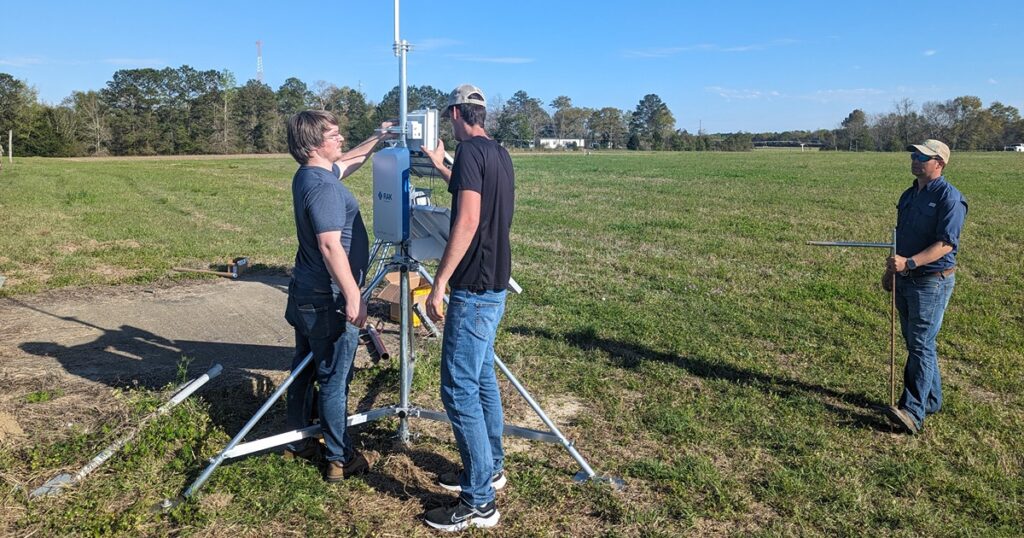
The Internet of Things for Precision Agriculture Center (IoT4Ag), now entering its fifth year, is paving the way for affordable technological innovations that help producers make informed management decisions by collecting data across farms in a low-power, long-range approach with the Solar-Powered Remote IoT4Ag Network Gateway (SPRING) project.
The National Science Foundation has funded IoT4Ag to connect cross-disciplinary scientists from four institutions — the University of Pennsylvania, Purdue University, the University of California, Merced, and the University of Florida —to each other as well as to farmers and industry partners.
The Internet of Things, or IoT, focuses on building connections. Think of how your phone has Bluetooth, which allows it to play music over your car speakers. Or, if you have a smart home, you might be able to check that you closed the garage door before you left from your work computer. The ability of these devices to work together is IoT.
Although agriculture has many high-tech elements, it lags behind many industries in regard to IoT. Rural areas lack access to internet and cellular connections, and the large initial cost of new technologies can make them difficult for growers to adopt. But in the face of climate change, a growing need for traceability and rising costs of production, farmers need IoT now more than ever to gather and access data that informs their daily and long-term management decisions.
IoT4Ag managing director Bob Brier, of the University of Pennsylvania, said center director Cherie Kagan founded IoT4Ag to help adapt agriculture to the “grand societal changes and needs regarding food, energy, agriculture and water conservation.”
This story was written by Lindsey Berebitsky. To read the full article, please visit Purdue AG.
